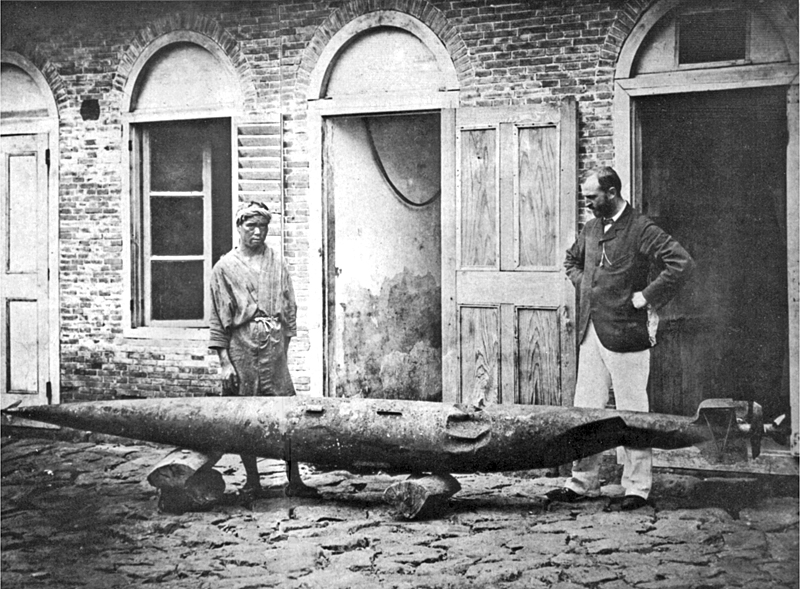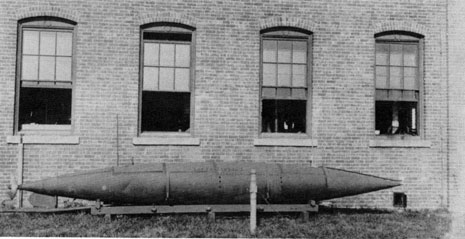|
Battle Of Pacocha
The Battle of Pacocha was a naval battle that took place on 29 May 1877 between the rebel-held Peruvian monitor ''Huáscar'' and the British ships and . The vessels did not inflict significant damage on each other, however the battle is notable for seeing the first combat use of the self-propelled torpedo. Background In May 1877, Nicolás de Piérola, former Minister of Finance, initiated an attempt to overthrow then-President Mariano Ignacio Prado. As part of this coup attempt, on 6 May two of his supporters, Colonel Lorranaga and Major Echenique, boarded ''Huáscar'' at the port of Callao while the captain and executive officer were ashore. Officers remaining on the ship were part of the plot and persuaded the crew to join their cause. Now in rebel hands, ''Huáscar'' put to sea with Luis Germán Astete in command. Other Peruvian naval ships present in the port, such as ''Atahualpa'', were in a state of disrepair and unable to pursue. The rebels used the ship to harass ... [...More Info...] [...Related Items...] OR: [Wikipedia] [Google] [Baidu] |
William Frederick Mitchell
William Frederick Mitchell (Calshot, 1845–1914, Ryde, Isle of Wight) was a British artist commissioned to paint many naval and merchant ships. Mitchell's collected works were originally published in The Royal Navy in a series of illustrations. Many are in the National Maritime Museum Collection in Greenwich, England. Mitchell lived most of his life near Portsmouth and painted pictures of Royal Navy and merchant ships for their officers and owners. He also illustrated ''Brassey's Naval Annual''. Mitchell's works are numbered and run to more than 3,500. His medium was principally watercolour but he painted some oils as well. Mitchell wrote a short autobiography for the 1904 May/June issue of ''The Messenger'', a magazine for deaf people, in which he describes how scarlet fever deprived him of his hearing but at home his father, an HM Coastguard stationed at Calshot Castle, taught him to speak. The autobiography relates his move to Ryde on the Isle of Wight, shortly after ... [...More Info...] [...Related Items...] OR: [Wikipedia] [Google] [Baidu] |
Whitehead Torpedo
The Whitehead torpedo was the first self-propelled or "locomotive" torpedo ever developed. It was perfected in 1866 by Robert Whitehead from a rough design conceived by Giovanni Luppis of the Austro-Hungarian Navy in Fiume. It was driven by a three-cylinder compressed-air engine invented, designed, and made by Peter Brotherhood. Many naval services procured the Whitehead torpedo during the 1870s, including the US Navy. This early torpedo proved itself in combat during the Russo-Turkish War when, on January 16, 1878, the Ottoman ship ''Intibah'' was sunk by Russian torpedo boats carrying Whiteheads, though this story has been disputed in one book. The term "torpedo" comes from the Torpedo fish, which is a type of ray that delivers an electric shock to stun its prey. History During the 19th century, an officer of the Austrian Marine Artillery conceived the idea of using a small boat laden with explosives, propelled by a steam or an air engine and steered by cables to be us ... [...More Info...] [...Related Items...] OR: [Wikipedia] [Google] [Baidu] |
International Maritime Incidents
International is an adjective (also used as a noun) meaning "between nations". International may also refer to: Music Albums * ''International'' (Kevin Michael album), 2011 * ''International'' (New Order album), 2002 * ''International'' (The Three Degrees album), 1975 *''International'', 2018 album by L'Algérino Songs * The Internationale, the left-wing anthem * "International" (Chase & Status song), 2014 * "International", by Adventures in Stereo from ''Monomania'', 2000 * "International", by Brass Construction from ''Renegades'', 1984 * "International", by Thomas Leer from ''The Scale of Ten'', 1985 * "International", by Kevin Michael from ''International'' (Kevin Michael album), 2011 * "International", by McGuinness Flint from ''McGuinness Flint'', 1970 * "International", by Orchestral Manoeuvres in the Dark from '' Dazzle Ships'', 1983 * "International (Serious)", by Estelle from '' All of Me'', 2012 Politics * Political international, any transnational organization of ... [...More Info...] [...Related Items...] OR: [Wikipedia] [Google] [Baidu] |
Conflicts In 1877
Conflict may refer to: Arts, entertainment, and media Films * ''Conflict'' (1921 film), an American silent film directed by Stuart Paton * ''Conflict'' (1936 film), an American boxing film starring John Wayne * ''Conflict'' (1937 film), a Swedish drama film directed by Per-Axel Branner * ''Conflict'' (1938 film), a French drama film directed by Léonide Moguy * ''Conflict'' (1945 film), an American suspense film starring Humphrey Bogart * ''Catholics: A Fable'' (1973 film), or ''The Conflict'', a film starring Martin Sheen * ''Judith'' (1966 film) or ''Conflict'', a film starring Sophia Loren * ''Samar'' (1999 film) or ''Conflict'', a 1999 Indian film by Shyam Benegal Games * ''Conflict'' (series), a 2002–2008 series of war games for the PS2, Xbox, and PC * ''Conflict'' (video game), a 1989 Nintendo Entertainment System war game * '' Conflict: Middle East Political Simulator'', a 1990 strategy computer game Literature and periodicals * ''Conflict'' (novel) ... [...More Info...] [...Related Items...] OR: [Wikipedia] [Google] [Baidu] |
Naval Battles Involving Peru
A navy, naval force, or maritime force is the branch of a nation's armed forces principally designated for naval warfare, naval and amphibious warfare; namely, lake-borne, riverine, littoral zone, littoral, or ocean-borne combat operations and related functions. It includes anything conducted by surface Naval ship, ships, amphibious warfare, amphibious ships, submarines, and seaborne naval aviation, aviation, as well as ancillary support, communications, training, and other fields. The strategic offensive role of a navy is Power projection, projection of force into areas beyond a country's shores (for example, to protect Sea lane, sea-lanes, deter or confront piracy, ferry troops, or attack other navies, ports, or shore installations). The strategic defensive purpose of a navy is to frustrate seaborne projection-of-force by enemies. The strategic task of the navy also may incorporate nuclear deterrence by use of submarine-launched ballistic missiles. Naval operations can be broa ... [...More Info...] [...Related Items...] OR: [Wikipedia] [Google] [Baidu] |
Naval Battles Involving The United Kingdom
A navy, naval force, or maritime force is the branch of a nation's armed forces principally designated for naval and amphibious warfare; namely, lake-borne, riverine, littoral, or ocean-borne combat operations and related functions. It includes anything conducted by surface ships, amphibious ships, submarines, and seaborne aviation, as well as ancillary support, communications, training, and other fields. The strategic offensive role of a navy is projection of force into areas beyond a country's shores (for example, to protect sea-lanes, deter or confront piracy, ferry troops, or attack other navies, ports, or shore installations). The strategic defensive purpose of a navy is to frustrate seaborne projection-of-force by enemies. The strategic task of the navy also may incorporate nuclear deterrence by use of submarine-launched ballistic missiles. Naval operations can be broadly divided between riverine and littoral applications (brown-water navy), open-ocean applications (blu ... [...More Info...] [...Related Items...] OR: [Wikipedia] [Google] [Baidu] |
1891
Events January–March * January 1 ** Paying of old age pensions begins in Germany. ** A strike of 500 Hungarian steel workers occurs; 3,000 men are out of work as a consequence. ** Germany takes formal possession of its new African territories. * January 2 – A. L. Drummond of New York is appointed Chief of the Treasury Secret Service. * January 4 – The Earl of Zetland issues a declaration regarding the famine in the western counties of Ireland. * January 5 **The Australian shearers' strike, that leads indirectly to the foundation of the Australian Labor Party, begins. **A fight between the United States and Indians breaks out near Pine Ridge agency. ** Henry B. Brown, of Michigan, is sworn in as an Associate Justice of the Supreme Court. **A fight between railway strikers and police breaks out at Motherwell, Scotland. * January 6 – Encounters continue, between strikers and the authorities at Glasgow. * January 7 ** General M ... [...More Info...] [...Related Items...] OR: [Wikipedia] [Google] [Baidu] |
John Louis Lay
John Louis Lay (January 14, 1833 – April 17, 1899) was an American inventor, and a pioneer of the torpedo. Biography Lay was born in Buffalo, New York. He was appointed 2nd assistant engineer in the Union Navy on July 8, 1862, and was promoted to 1st assistant engineer on October 15, 1863. He designed the spar torpedo which was used by Lieutenant William B. Cushing to destroy the Confederate ironclad ram at Plymouth, North Carolina, on October 27, 1864. After the fall of Richmond in 1865, Lay was sent in advance of Admiral David D. Porter's fleet to remove obstructions from the James River. Lay resigned from the navy on May 22, 1865, and was then was employed by the Peruvians to fortify the harbor of Callao with fixed mines and suspended torpedoes, in order to prevent the Spanish fleet from entering. Lay returned to the United States in 1867, where he began work on the design and building of a locomotive (self-propelled) torpedo. Lay's first design, the Lay Torpedo or Lay Dir ... [...More Info...] [...Related Items...] OR: [Wikipedia] [Google] [Baidu] |
1879
Events January–March * January 1 – The Specie Resumption Act takes effect. The United States Note is valued the same as gold, for the first time since the American Civil War. * January 11 – The Anglo-Zulu War begins. * January 22 – Anglo-Zulu War – Battle of Isandlwana: A force of 1,200 British soldiers is wiped out by over 20,000 Zulu warriors. * January 23 – Anglo-Zulu War – Battle of Rorke's Drift: Following the previous day's defeat, a smaller British force of 140 successfully repels an attack by 4,000 Zulus. * February 3 – Mosley Street in Newcastle upon Tyne (England) becomes the world's first public highway to be lit by the electric incandescent light bulb invented by Joseph Swan. * February 8 – At a meeting of the Royal Canadian Institute, engineer and inventor Sandford Fleming first proposes the global adoption of standard time. * March 3 – United States Geological Survey is founded. * March 11 – The Ry ... [...More Info...] [...Related Items...] OR: [Wikipedia] [Google] [Baidu] |
War Of The Pacific
The War of the Pacific ( es, link=no, Guerra del Pacífico), also known as the Saltpeter War ( es, link=no, Guerra del salitre) and by multiple other names, was a war between Chile and a Bolivian–Peruvian alliance from 1879 to 1884. Fought over Chilean claims on coastal Bolivian territory in the Atacama Desert, the war ended with a Chilean victory, which gained for the country a significant amount of resource-rich territory from Peru and Bolivia. The war began over a nitrate taxation dispute between Bolivia and Chile, with Peru being drawn in due to its secret alliance with Bolivia. But historians have pointed to deeper origins of the war, such as the interest of Chile and Peru in the nitrate business, the long-standing rivalry between Chile and Peru, as well as political and economical disparities between Chile, Peru and Bolivia. On February 14, 1879, Chile's armed forces occupied the Bolivian port city of Antofagasta, subsequently war between Bolivia and Chile was decl ... [...More Info...] [...Related Items...] OR: [Wikipedia] [Google] [Baidu] |







